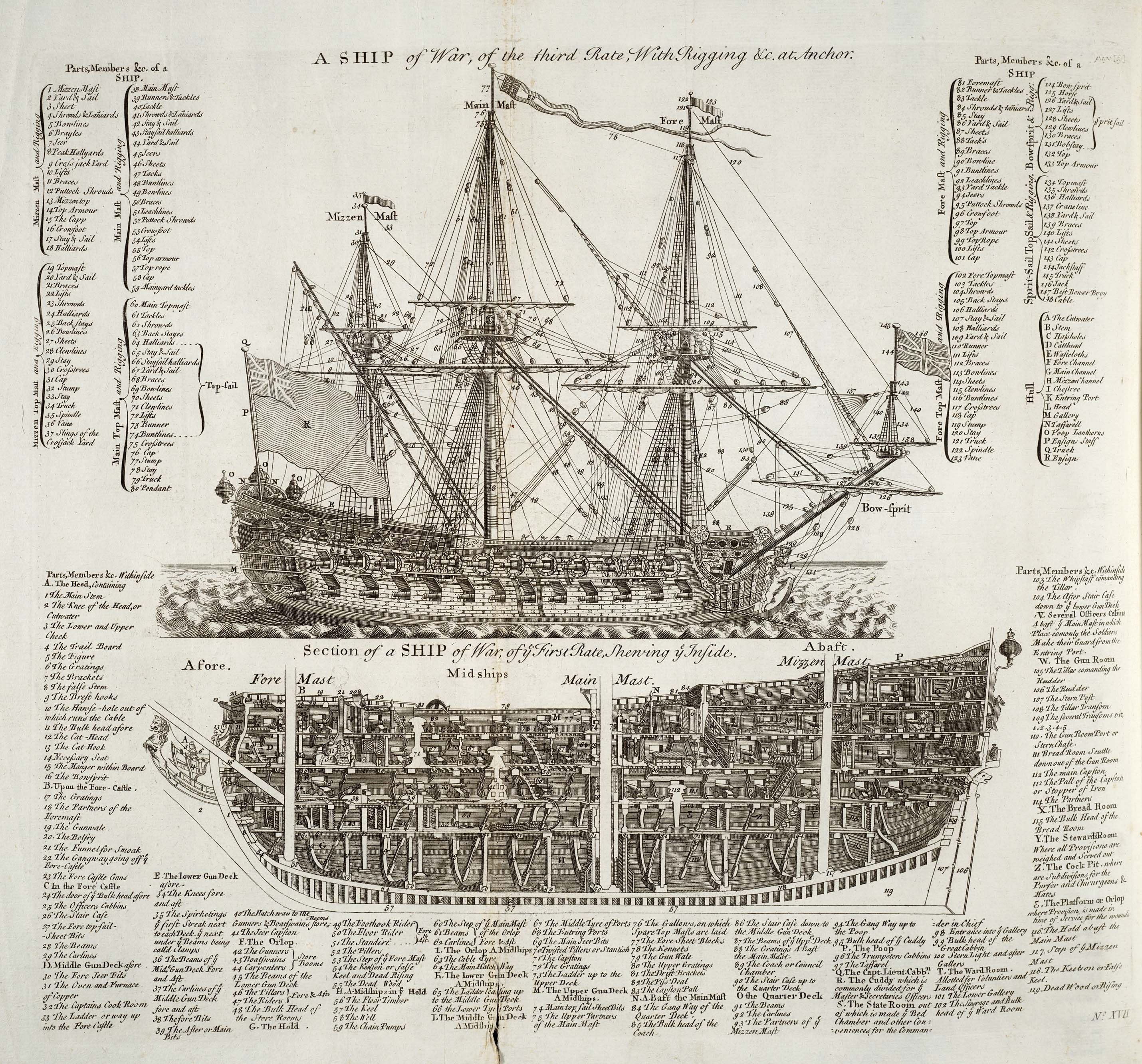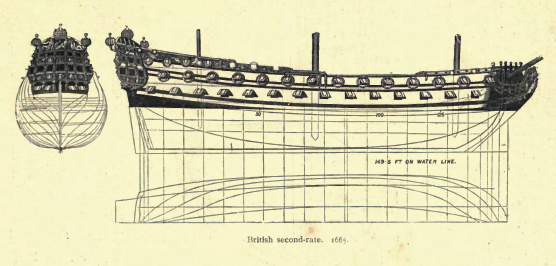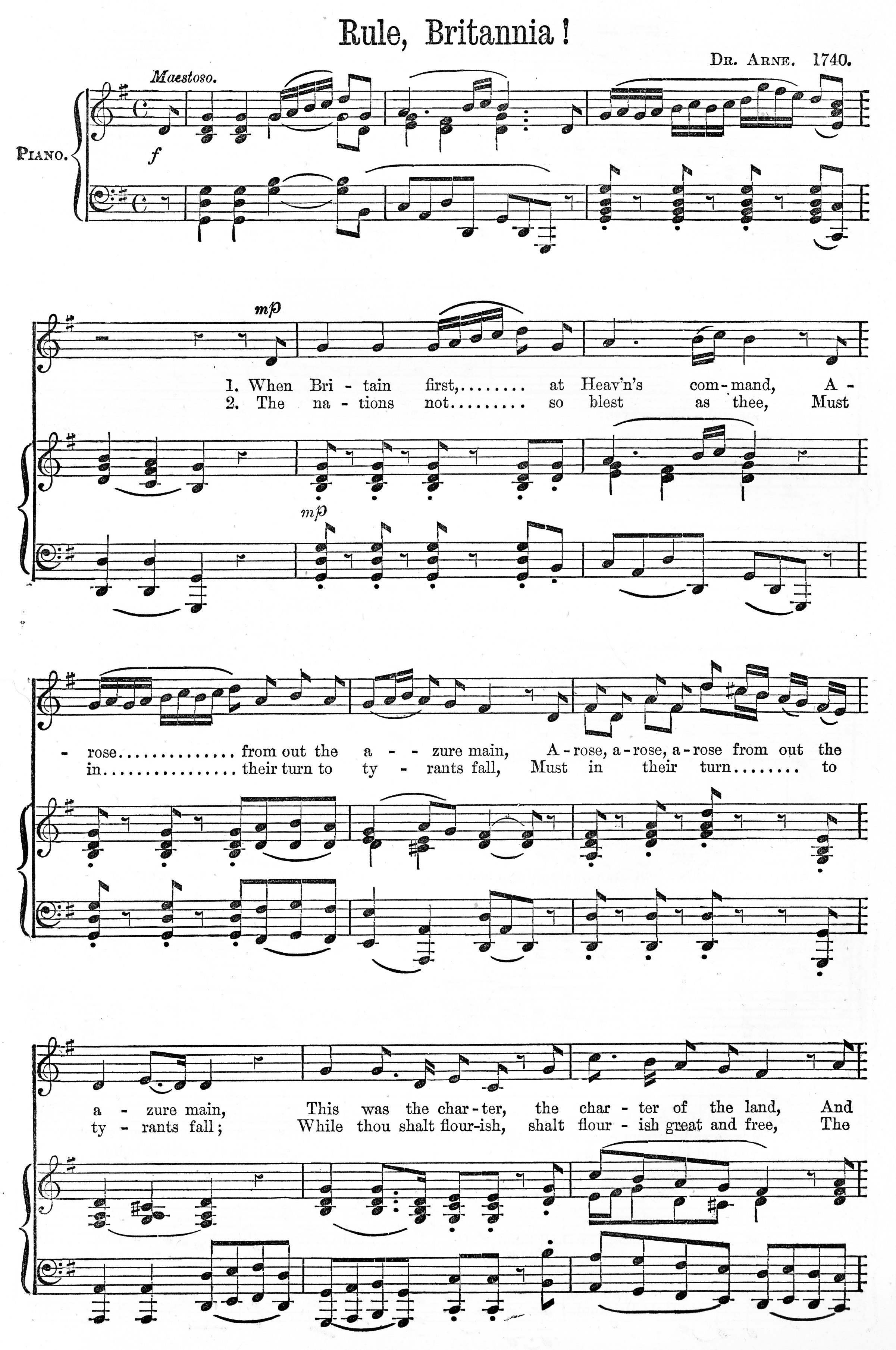|
Three-decker
A three-decker was a sailing warship which carried her principal carriage-mounted guns on three fully armed decks. Usually additional (smaller) guns were carried on the upper works (forecastle and quarterdeck), but this was not a continuous battery and so did not count as a "fourth deck". Three-deckers were usually "ships of the line", i.e. of sufficient strength to participate in the line of battle, and in the rating system of the Royal Navy were generally classed as first or second rates, although from the mid-1690s until the 1750s the larger of the third rates were also three-deckers. Three-deckers also served in the naval forces of other European states, notably those of France, Russia and Spain. The French definition of a three-decker differed from that of the English Navy until 1690, as some ships that were officially termed "three-deckers" prior to this date had only a partially-armed third tier of guns, with a significant gap between the guns in the forward portion of ... [...More Info...] [...Related Items...] OR: [Wikipedia] [Google] [Baidu] |
Ship Of The Line
A ship of the line was a type of naval warship constructed during the Age of Sail from the 17th century to the mid-19th century. The ship of the line was designed for the naval tactic known as the line of battle, which depended on the two columns of opposing warships maneuvering to volley fire with the cannons along their broadsides. In conflicts where opposing ships were both able to fire from their broadsides, the opponent with more cannons firingand therefore more firepowertypically had an advantage. Since these engagements were almost invariably won by the heaviest ships carrying more of the most powerful guns, the natural progression was to build sailing vessels that were the largest and most powerful of their time. From the end of the 1840s, the introduction of steam power brought less dependence on the wind in battle and led to the construction of screw-driven wooden-hulled ships of the line; a number of purely sail-powered ships were converted to this propulsion mech ... [...More Info...] [...Related Items...] OR: [Wikipedia] [Google] [Baidu] |
Rating System Of The Royal Navy
The rating system of the Royal Navy and its predecessors was used by the Royal Navy between the beginning of the 17th century and the middle of the 19th century to categorise sailing warships, initially classing them according to their assigned complement of men, and later according to the number of their carriage-mounted guns. The rating system of the Royal Navy formally came to an end in the late 19th century by declaration of the Admiralty. The main cause behind this declaration focused on new types of gun, the introduction of steam propulsion and the use of iron and steel armour which made rating ships by the number of guns obsolete. Origins and description The first movement towards a rating system may be seen in the 15th century and the first half of the 16th century, when the largest carracks in the Navy (such as the ''Mary Rose'', the '' Peter Pomegranate'' and the ''Henri Grâce à Dieu'') were denoted "great ships". This was only on the basis of their roughly-esti ... [...More Info...] [...Related Items...] OR: [Wikipedia] [Google] [Baidu] |
Second Rate
In the rating system of the Royal Navy used to categorise sailing warships, a second-rate was a ship of the line which by the start of the 18th century mounted 90 to 98 guns on three gun decks; earlier 17th-century second rates had fewer guns and were originally two-deckers or had only partially armed third gun decks. A "second rate" was the second largest class of warships in a hierarchical system of six "ratings" based on size and firepower. They were essentially smaller and hence cheaper versions of the three-decker first rates. Like the first rates, they fought in the line of battle, but unlike the first rates, which were considered too valuable to risk in distant stations, the second rates often served also in major overseas stations as flagships. They had a reputation for poor handling and slow sailing. They were popular as flagships of admirals commanding the Windward and/or Leeward Islands station, which was usually a Rear-admiral of the red. Rating Typically measuri ... [...More Info...] [...Related Items...] OR: [Wikipedia] [Google] [Baidu] |
Third Rate
In the rating system of the Royal Navy, a third rate was a ship of the line which from the 1720s mounted between 64 and 80 guns, typically built with two gun decks (thus the related term two-decker). Years of experience proved that the third rate ships embodied the best compromise between sailing ability (speed, handling), firepower, and cost. So, while first-rates and second-rates were both larger and more powerful, third-rate ships were the optimal configuration. Rating When the rating system was first established in the 1620s, the third rate was defined as those ships having at least 200 but not more than 300 men; previous to this, the type had been classified as "middling ships". By the 1660s, the means of classification had shifted from the number of men to the number of carriage-mounted guns, and third rates at that time mounted between 48 and 60 guns. By the turn of the century, the criterion boundaries had increased and third rate carried more than 60 guns, with seco ... [...More Info...] [...Related Items...] OR: [Wikipedia] [Google] [Baidu] |
First Rate
In the rating system of the British Royal Navy used to categorise sailing warships, a first rate was the designation for the largest ships of the line. Originating in the Jacobean era The Jacobean era was the period in English and Scottish history that coincides with the reign of James VI of Scotland who also inherited the crown of England in 1603 as James I. The Jacobean era succeeds the Elizabethan era and precedes the Ca ... with the designation of Ships Royal capable of carrying at least 400 men, the size and establishment of first-rates evolved over the following 250 years to eventually denote ships of the line carrying at least 80 guns across three gundecks. By the end of the eighteenth century, a first-rate carried no fewer than 100 guns and more than 850 crew, and had a measurement (Builder%27s_Old_Measurement, burthen) tonnage of some 2,000 tons. Origins The concept of a rating system for British naval vessels dates to the accession of James I of England, follo ... [...More Info...] [...Related Items...] OR: [Wikipedia] [Google] [Baidu] |
HMS Britannia (1820)
HMS ''Britannia'' was a 120-gun first-rate ship-of-the-line of the Royal Navy, laid down in 1813 and launched on 20 October 1820. Commissioned in 1823, she saw service in the Mediterranean from 1830-1 and in 1841. She was decommissioned in 1843, before returning to service for the Crimean War, serving as flagship of Admiral Sir James Whitley Deans Dundas, James Deans Dundas, commanding the British fleet in the Mediterranean and Black Sea from 1851–4.. She was engaged in the Siege of Sevastopol (1854–1855), Bombardment of Sebastopol on 17 October 1854 during the Crimean War The Crimean War, , was fought from October 1853 to February 1856 between Russia and an ultimately victorious alliance of the Ottoman Empire, France, the United Kingdom and Piedmont-Sardinia. Geopolitical causes of the war included the de ....Duckers, The Crimean War at Sea, Appendix 1. On Great Storm of 1854, 14 November 1854, she was driven ashore on the Russian Empire, Russian coast and w ... [...More Info...] [...Related Items...] OR: [Wikipedia] [Google] [Baidu] |
Oriental Crisis Of 1840
The Oriental Crisis of 1840 was an episode in the Egyptian–Ottoman War in the eastern Mediterranean, triggered by the self-declared Khedive of Egypt and Sudan Muhammad Ali Pasha's aims to establish a personal empire in the Ottoman province of Egypt. Background In the preceding decades, Muhammad Ali had expanded and strengthened his hold on Ottoman territory, beginning with Egypt where he acted as a viceroy for the Sultan. Called upon to assist the Ottomans in the Greek War of Independence, Muhammad Ali in return demanded parts of Ottoman Syria to be transferred to his personal rule. When the war ended and the Porte failed to keep its promise, Muhammad Ali launched a military campaign against his Ottoman masters and easily took most of the Syrian lands. Syrian War In 1839, the Ottoman Empire attempted to retake Syria from Muhammad Ali but was defeated by his son, Ibrahim Pasha in the Battle of Nezib. Thus, a new war between Muhammad Ali and the Ottomans escalated, with th ... [...More Info...] [...Related Items...] OR: [Wikipedia] [Google] [Baidu] |
72nd Regiment, Duke Of Albany's Own Highlanders
The 72nd Highlanders was a British Army Highland Infantry Regiment of the Line. Raised in 1778, it was originally numbered 78th, before being redesignated the 72nd in 1786. Under the Childers Reforms it amalgamated with the 78th (Highlanders) Regiment to form the 1st Battalion of the Seaforth Highlanders in 1881. History Early history The regiment was raised in the Western Highlands by Kenneth Mackenzie, Earl of Seaforth as the Seaforth (Highland) Regiment in January 1778 as an act of gratitude for the restoration of the family Earldom which had been forfeited during the Jacobite rising of 1715. A corps of 1,130 men was raised of whom 900 were Highlanders and the remainder came from the Lowlands: it was established at Elgin, its first base, in May 1778. In August 1778 the regiment marched to Leith to embark for India – but a dispute regarding their terms of service led about half the men to march back to Edinburgh where they took up a position of protest on Arthur's Seat ... [...More Info...] [...Related Items...] OR: [Wikipedia] [Google] [Baidu] |
Rule, Britannia!
"Rule, Britannia!" is a British patriotic song, originating from the 1740 poem "Rule, Britannia" by James Thomson and set to music by Thomas Arne in the same year. It is most strongly associated with the Royal Navy, but is also used by the British Army. ''Alfred'' The song was originally the final musical number in Thomas Arne's ''Alfred'', a masque about Alfred the Great, co-written by James Thomson and David Mallet and first performed at Cliveden, the country home of Frederick, Prince of Wales, on 1 August 1740. Lyrics This version is taken from ''The Works of James Thomson'' by James Thomson, Published 1763, Vol II, p. 191, which includes the entire text of ''Alfred''. "Married to a Mermaid" In 1751 Mallet re-used the text of "Rule, Britannia!", omitting three of the original six stanzas and adding three new ones by Lord Bolingbroke, to form the repeated chorus of a comic song "Married to a Mermaid". This became extremely popular when Mallet produced his m ... [...More Info...] [...Related Items...] OR: [Wikipedia] [Google] [Baidu] |
Two-decker
A two-decker is a sail warship which carried her guns on two fully armed decks. Usually additional guns were carried on the upper works (forecastle and quarterdeck), but this was not a continuous battery and thus not counted as a full gun deck. Two-deckers ranged all the way from the small 40-gun Fifth rate up to 80- or even 90-gun ships of the line, with the third-rate of seventy-four guns, or " seventy-four", being the archetype. See also *Three-decker A three-decker was a sailing warship which carried her principal carriage-mounted guns on three fully armed decks. Usually additional (smaller) guns were carried on the upper works (forecastle and quarterdeck), but this was not a continuous b ... Naval sailing ship types {{navy-stub ... [...More Info...] [...Related Items...] OR: [Wikipedia] [Google] [Baidu] |






.jpg)